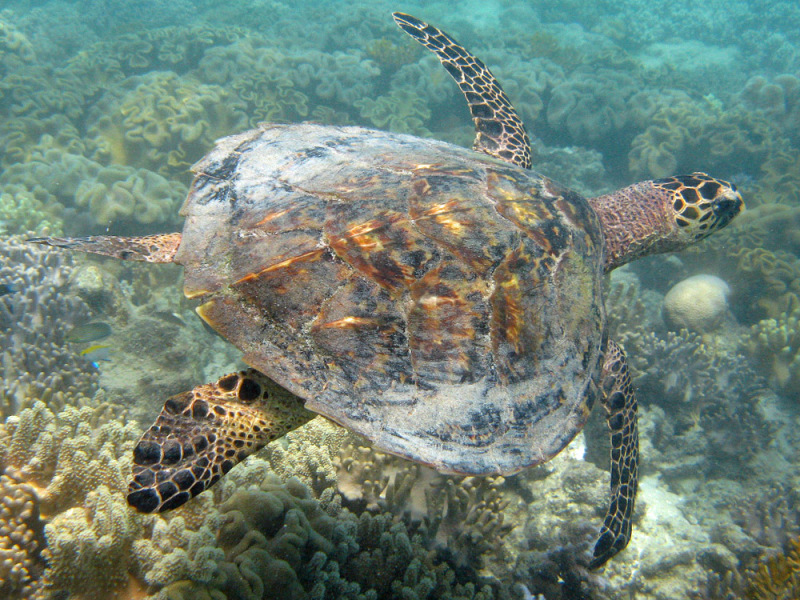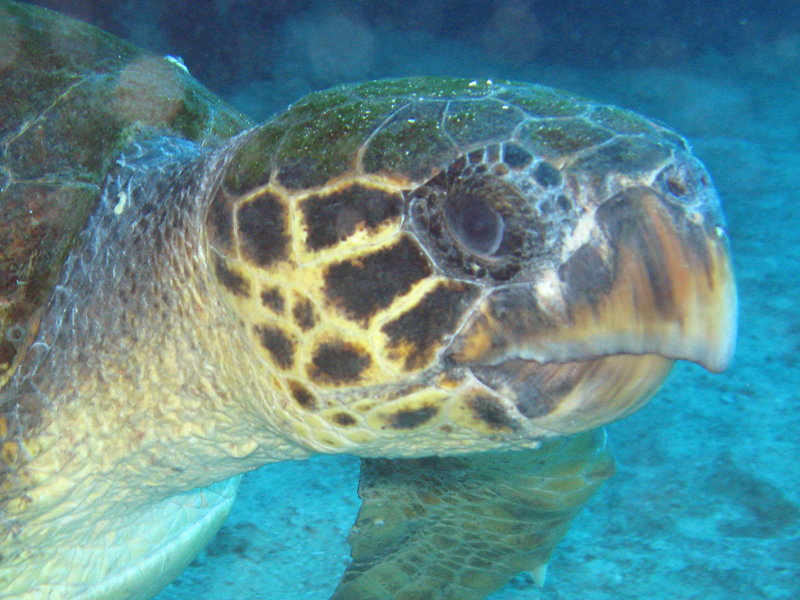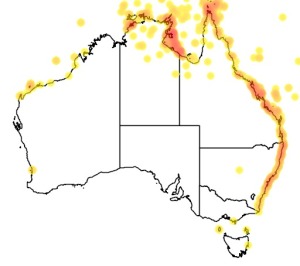�
�
�
���
Eretmochelys imbricata
Hawksbill Turtle
Kingdom
Animalia
Phylum
Chordata
Class
Reptilia
Order
Testudines
Family
Cheloniidae
Genus
Eretmochelys
Species
Eretmochelys imbricata
Status
critically endangered
Colours
Distinguishing features
The Hawksbill Turtle has a strong beak-like snout and two pairs of scales on the head immediately behind the nostrils. These features distinguish it from the Green Turtle, which has a less extravagant snout and only one pair of scales behind the nostrils. Both species have four pairs of "plates" on the shell flanking the midline.
Size
- Up to 100 cm (carapace length)
Synonyms
Similar taxa
Distribution
Local abundance
- Lizard Island: Second most common turtle in this area after the Green Turtle.
Web resources
References
- Goatley, C.H.R. (2013). The ecological role of sediments on coral reefs, PhD thesis, James Cook University. LIRS catalog number 1840.
- Goatley, C.H.R., A.S. Hoey and D.R. Bellwood (2012). The role of turtles as coral reef macroherbivores. PLoS One, 7(6): e39979. LIRS catalog number 1523.
- Limpus, C.H. (1982). The reptiles of Lizard Island, Herpetofauna, 13(2): 1-6. LIRS catalog number 73.
- View all references





